Economics Laboratory, now known as Ecolab, was one of the first to hire people with developmental disabilities under an experimental work program designed to teach them viable skills.
When Frank Cerny, an Ecolab vice president, spoke to program graduates in 1967, he said, "Each of us has a special talent. We must discover our strong point, get training and find our place in the world."
American Express, Lutheran Brotherhood, Radisson Hotels and McDonalds followed suit by increasing their commitments to help find employment for people with developmental disabilities.
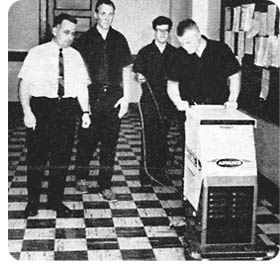
Economics Laboratory was one of the first companies to hire people with developmental disabilities.
By now, day programs had become a major focus for comprehensive services in all counties throughout the state. In March of 1967, the state Arc organization issued a positive report outlining the remarkable progress made by individuals with developmental disabilities participating in day programs.
This progress cost the state just 60 cents per hour for each participant, considerably less than traditional residential care.
In 1967, the U.S. Public Health Service awarded Hennepin County a $150,000 grant to fund day programs for three years. Meanwhile, mental health centers in Minnesota were given added duties, including responsibility for planning day programs for local citizens with developmental disabilities.
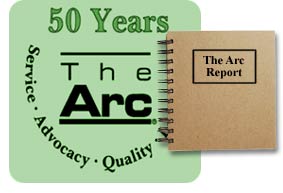
The Arc Report illustrated how day programs have helped people with developmental disabilities make significant progress at a low cost.
Despite this progress, the state Legislature approved nearly 2,000 new positions for state hospitals in 1966. Again, the media played a role in initiating change.
Sam Newlund, whose 1965 exposé in the Minneapolis Tribune uncovered serious deficiencies in the state hospital system, re-visited the topic in 1967. The follow-up series reported that, even with the new staffing levels, staff turnover rates at Faribault was 100 percent. Aides could not live on the low pay and many had to work double shifts.
Overall, turnover in the state hospital system was 35.7%.
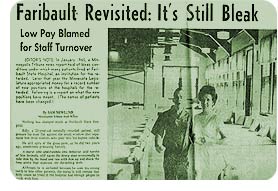
A 1967 expose revisited an earlier series only to find that little had changed.
Newlund, from the Minneapolis Tribune, did have some positive progress to report. By 1967, half of the men living in institutions wore shoes, largely because of staff efforts.
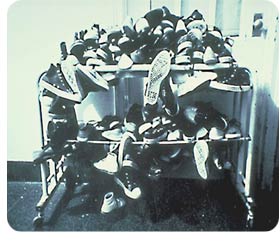
Positive progress:
Half of male residents wore shoes by 1967.
An international authority on disability issues, Bengt Nirje of Sweden visited Minnesota state hospitals in 1967 before meeting with Governor Harold LeVander.
Nirje preached the "normalization principle," already successful in Scandinavia. This principle urged that people with developmental disabilities receive the same level of housing, schooling, and medical care provided for all other people.
Calling some Minnesota hospital conditions "horrible," "inhumane," and "impersonal," Nirje observed that he had witnessed "new means of degrading people" during his visits.

Swedish expert Bengt Nirje found Minnesota institutions "horrible" and "inhumane."
Arc continued to act as advocate for people with developmental disabilities, testifying before the Legislature that it was time to resolve the future of Minnesota's state hospitals once and for all.
At the hearings, witnesses outlined the need to reduce overcrowding. They also noted that current proposals to regionalize services neglected to discuss what happens to the residents currently living in Minnesota's state hospitals.

For decades, Arc was one of the state's
most vocal and effective advocates for people
with developmental disabilities.
In 1968, attorney Mel Heckt led a group of 11 judges, lawyers and law enforcement officials in drafting statutes protecting rights for people with developmental disabilities.
The Arc identified a legislative agenda that emphasized rights for people with developmental disabilities. The organization felt this emphasis was necessary before community services could be expanded.

Mel Heckt
In 1968, the state Arc published "The Next Step: Goals for Institutions," calling for 1,084 technicians, higher staff pay, a decrease in turnover, razing old buildings and moving people back into the community.
Video: Jerry Walsh, veteran executive director of Minnesota ARC, described the major reasons they succeeded in gaining additional funds for facilities and families.
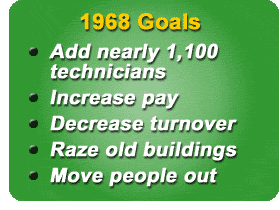
"The Next Step: Goals for Institutions."







